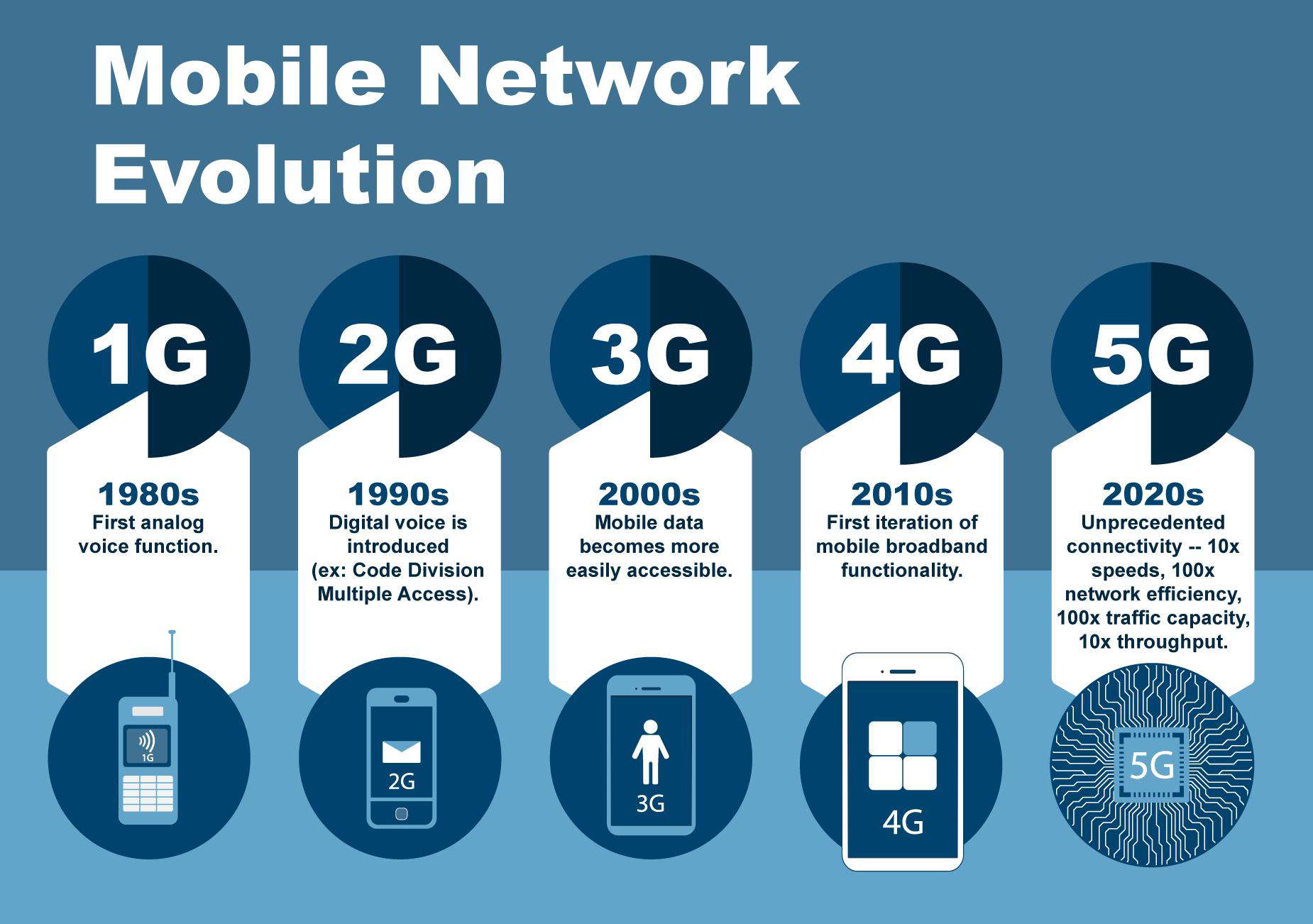Wireless communications has been around for more than a century and is changing continuously with various advancements. It all started with 1G in the 1980’s, which was based on analog technology that could only transmit voice traffic and was limited by network capacity. With the arrival of 2G it opened the doors for digital communication, this also gave a higher degree of confidentiality and also increased the capacity significantly. Then cam 2G which was the revolutionary change in the area of wireless communication. With the integration of 2G there was a great development in 3G, which lead to further development in 3G and resulted in a more stable transmission and a huge leap in internet speed and a greater bandwidth. The mobile network changed drastically with the arrival of the 4G network as it is considered the biggest leap in internet speed. This has led to very fast transmission of data which has resulted in easy transmission of high quality videos and images.
With the revolution in communication technology the arrival of the 5G Era is considered as the internet of everything as it is considered to be the backbone of IoT and many other communication areas. The biggest key factor of 5G Communication is that it uses a combination of small cells and beamforming technology to provide ultra high speed internet with lower latency. It has 10 times higher internet speed than 4G which not only results in better download speed but is also useful for AR,VR and Cloud technologies.

5G Technology was introduced in India in October 2022 in some metro cities which include Mumbai, Delhi, Bangalore, Hyderabad, Kolkata, Chennai. Since then 5G network has started expanding in the entire country. But with the introduction of this new technology there are many challenges of 5G that the country is facing today. Some of them are discussed below :
- Infrastructure:
One of the biggest hurdle for 5G rollout in the country is the infrastructure as the companies need to invest more in fiber and small cell development. 5G services has been launched in around 70 countries and it is found that 5G network Infrastructure is quite capital intensive. The current Infrastructure statistics shows that at least 70% towers need to be fiberized from the existing level of 33% for the launch of 5G services. States like Himachal Pradesh, Manipur, Bihar and Nagaland have less than 30% fiberized tower which should be taken into consideration.
- Mobile Devices :
From the user end side majority of the smartphones user do not have 5G network facilities in their smartphones. Users need to upgrade their smartphones in order to use the 5G network so that this can lead to a successful 5G implementation.
- Low speed of Data and High Rates:
It is one of the major issues in implementation of 5G services in India. Currently India ranks 69th out of 147 countries with an average internet speed of 29.85Mbps. The present internet speed offered by the companies is not constant, especially in rural areas of the country. The data rate speed required for 5G is 1Tbps but it is only 29.85 mbps this is due to lack of fiber infrastructure and last mile connectivity.

For a better 5G connectivity in India that can reach every corner of the country our major concern should be solving the challenges that are being faced while implementing 5G in the entire nation. 5G can play a great role for using new technologies like AR,VR and Cloud computing which require high internet speed.
This is from our side today, keep following CEV for more such insightful content.
